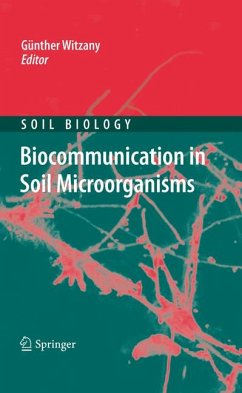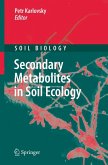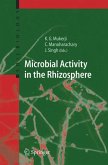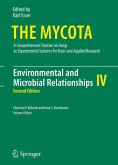Communication is defined as an interaction between at least two living agents which share a repertoire of signs. These are combined according to syntactic, semantic and context-dependent, pragmatic rules in order to coordinate behavior. This volume deals with the important roles of soil bacteria in parasitic and symbiotic interactions with viruses, plants, animals and fungi. Starting with a general overview of the key levels of communication between bacteria, further reviews examine the various aspects of intracellular as well as intercellular biocommunication between soil microorganisms. This includes the various levels of biocommunication between phages and bacteria, between soil algae and bacteria, and between bacteria, fungi and plants in the rhizosphere, the role of plasmids and transposons, horizontal gene transfer, quorum sensing and quorum quenching, bacterial-host cohabitation, phage-mediated genetic exchange and soil viral ecology.
Dieser Download kann aus rechtlichen Gründen nur mit Rechnungsadresse in A, B, BG, CY, CZ, D, DK, EW, E, FIN, F, GR, HR, H, IRL, I, LT, L, LR, M, NL, PL, P, R, S, SLO, SK ausgeliefert werden.
"The discovery of cellular communication (both inter- and intra-species communication) in the microbial world is one of the most exciting and significant scientific breakthroughs in the last quarter century. "Biocommunication in Soil Microorganisms" provides a in-depth review of many aspects of this topic for microorganisms and their viruses that inhabit the soil ecosystem. The chapters are written by leading experts in the field and provide a thorough treatment of our state-of-knowledge while also stimulating ideas for future investigation. It will be an essential reference for all of those with interest in microbial communication."
Mark Radosevich, Biosystems Engineering and Soil Science, University of Tennessee, Knoxville, USA
"Historically, we did not think of soil microorganisms as being immersed in an ecology of biocommunication. But we have recently come to appreciate the richness of such communication. And in this exchange of information the viruses (phages) and related genetic agents contribute a major mode of communication. Günther Witzany is to be commended for having compiled a milestone edition that has brought this topic together for the first time."
Luis P. Villarreal, Department of Molecular Biology and Biochemistry, University of California, Irvine, USA
Mark Radosevich, Biosystems Engineering and Soil Science, University of Tennessee, Knoxville, USA
"Historically, we did not think of soil microorganisms as being immersed in an ecology of biocommunication. But we have recently come to appreciate the richness of such communication. And in this exchange of information the viruses (phages) and related genetic agents contribute a major mode of communication. Günther Witzany is to be commended for having compiled a milestone edition that has brought this topic together for the first time."
Luis P. Villarreal, Department of Molecular Biology and Biochemistry, University of California, Irvine, USA









